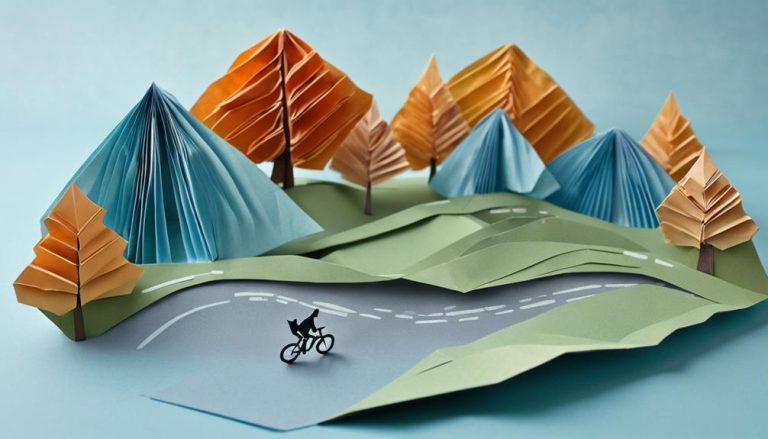General Rules of Sport Climbing
When it comes to navigating the vertical realm of sport climbing, knowing the ropes is key to your success on the wall. From selecting the right shoes to understanding the intricacies of belaying, each aspect of this sport demands attention to detail and adherence to protocol. But before you embark on your climbing journey, there is one fundamental rule that serves as the cornerstone of this exhilarating activity. Want to ensure a safe and enjoyable experience? Let's start by unraveling the enigma of belay devices and their crucial role in your climbing endeavors.
Essential Gear for Sport Climbing
When sport climbing, you must ensure you have the essential gear to ensure your safety and success on the wall. Two crucial pieces of equipment are climbing shoes and a properly fitting harness. Climbing shoes are designed to provide grip and precision on the rock surface. They should fit snugly to offer support and sensitivity while allowing for flexibility in your movements. Look for a pair that matches the shape of your feet and provides a comfortable yet snug fit to prevent any slipping or discomfort during climbs.
Equally important is a well-fitted harness. Your harness is your lifeline, securing you to the rope and protecting you in case of a fall. When selecting a harness, ensure it fits snugly around your waist and thighs without being too tight or too loose. Double-check all buckles and straps to guarantee a proper fit before starting your climb. Remember, having the right gear not only enhances your performance but also keeps you safe on the wall.
Safety Precautions and Protocols
What are the key safety precautions and protocols that climbers should adhere to in sport climbing? Safety is paramount in sport climbing, and understanding proper belay techniques is essential. Before starting a climb, always double-check your harness, knots, and gear. When belaying, maintain constant attention on the climber, with the brake hand always ready to control the rope in case of a fall. Proper communication between the climber and belayer is crucial. Use clear and agreed-upon signals such as "climbing," "slack," or "take" to ensure understanding throughout the climb.
Additionally, always perform safety checks on your equipment before each climb. Inspect ropes for fraying, harnesses for wear, and carabiners for any signs of damage. It's also important to have a reliable climbing partner who understands and follows safety protocols. Remember, safety is a shared responsibility, so don't hesitate to ask questions or seek clarification on any safety concerns. By prioritizing safety and adhering to proper belay techniques and clear climbing communication, you can enjoy a safer and more fulfilling sport climbing experience.
Understanding Climbing Grades
To excel in sport climbing, it is imperative to grasp the intricacies of climbing grades, which serve as a standardized measure of the difficulty of a route. Understanding climbing grades is essential for choosing routes that align with your skill level and goals. Grades are typically denoted by a number and a letter, with the number indicating the technical difficulty of the climb and the letter representing the level of danger involved. Here is a breakdown to help you navigate the world of climbing grades:
| Grade | Difficulty Level | Description |
|---|---|---|
| 5.5 | Beginner | Easy climbs for beginners |
| 5.10 | Intermediate | Moderate difficulty for climbers |
| 5.13 | Advanced | Challenging routes for experts |
| 5.15 | Expert | Extremely difficult climbs |
| 5.16 | Master | Reserved for elite climbers |
Leave No Trace Principles
Understanding the importance of adhering to Leave No Trace principles while sport climbing is crucial for preserving the natural environment and minimizing your impact on the climbing area. Environmental impact is a significant concern in outdoor activities, and as a responsible climber, it is essential to be mindful of the consequences your actions may have on the delicate ecosystems around climbing areas. By following ethical considerations and Leave No Trace principles, you can help maintain the beauty of these natural spaces for future generations.
To minimize environmental impact, always stay on designated trails to avoid trampling fragile vegetation. When climbing, try to minimize any disturbance to wildlife and avoid leaving any waste behind. Properly dispose of any trash, including tape, chalk, and food wrappers, in designated receptacles or by carrying them out with you. Additionally, avoid altering the rock or vegetation to create new climbing holds as this can harm the natural environment. By respecting these principles, you contribute to the preservation of the climbing areas and demonstrate your commitment to ethical climbing practices.
Etiquette and Respect at the Crag
When climbing at the crag, observing proper etiquette and showing respect for fellow climbers and the climbing environment is essential for a harmonious and safe climbing experience. Here are four key points to keep in mind:
- Proper Communication: Clear and effective communication with your climbing partners and others at the crag is crucial for ensuring everyone's safety and enjoyment. Discussing climbing plans, equipment needs, and potential hazards beforehand can prevent misunderstandings and accidents.
- Route Sharing: Be mindful of other climbers waiting to tackle a route you are on. If someone is waiting to climb a route you are working on, be courteous and offer to let them climb it before you continue your attempts. Similarly, if you are waiting to climb a route, respect those currently on it and wait your turn patiently.
- Respecting Climbing Areas: Treat climbing areas with care and respect by minimizing your impact on the environment. Avoid trampling vegetation, keep noise levels down, and pack out all trash, including tape and chalk.
- Community Spirit: Foster a sense of community by being friendly, supportive, and willing to lend a helping hand to others at the crag. Embrace the camaraderie that comes with climbing and create a positive atmosphere for everyone to enjoy.
Frequently Asked Questions
Can I Climb Without a Partner in Sport Climbing?
You can solo climb in sport climbing, but it's crucial to take safety precautions seriously. Soloing presents mental challenges and requires advanced skills. Interestingly, 30% of climbers have tried soloing, showcasing the desire to push boundaries.
How Do I Know if a Climbing Route Is Suitable for My Skill Level?
To assess if a climbing route matches your skill level, examine the route difficulty rating. Evaluate your climbing ability honestly to ensure a safe and enjoyable experience. Progress gradually to more challenging routes as you improve.
Are There Any Specific Diet Recommendations for Sport Climbers?
When fueling for climbing, consider balanced nutrition with a focus on protein, carbs, and healthy fats. Stay hydrated by drinking plenty of water throughout the day. These habits can support your climbing performance.
What Is the Best Way to Train for Sport Climbing?
To train effectively for sport climbing, focus on finger strength training and endurance workouts. Additionally, engage in mental preparation through visualization techniques. Consistent practice and a well-rounded approach will help you improve your climbing skills.
How Do I Deal With Fear of Falling While Sport Climbing?
Dealing with fear of falling in sport climbing can be tough, but you're not alone. Focus on fear management with mental techniques like positive self-talk and breathing exercises. Build confidence through visualization and practice.






